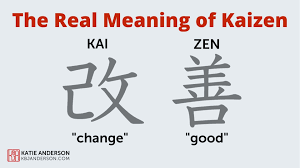To comprehend this topic, we need to understand leadership from various vantage points. We would also need to grasp the context of the second quarter of the 21st century.
Leadership is not the same at all levels of the corporate ladder. In lower levels, it is simply about getting a given task done by the subordinates; in the middle level it is about quality assurance of task and downloading and implementing strategy formulated at the top and at the highest levels, it is about formulating strategy for organisational growth and keeping shareholders and all stakeholders happy. So understandably, the challenges for each level will also be essentially different from the other.
As regards the second quarter of the 21st century: which starts in the beginning of 2026, the biggest challenge is to appreciate the fact that there is not enough time to prepare for what is coming up from that side of time. While it will be a period full of adventure, excitement and growth for the prepared, for others it can be quite unsettling. Change (the only constant and universally disliked phenomena) is already on the way. Now whether one is ready for this tsunami of change with a surfing board to navigate the tsunami and cover great distances with faster speeds or whether one drowns and gets swayed is the quintessential challenge; and leadership at all levels needs to be prepared for where it stands in this equation!!
Challenges for Leadership:
- Getting ready to ride – Leadership at the top most level will have to ensure the readiness of the entire organisational structure for an adventure ride in the technological blitzkrieg. As a recent research on the most popular job options at IIM says, Software Product Management takes the cake in every workplace, irrespective of whether the organisation is in tech services or it belongs to manufacturing, services, agri products, pharma, automobiles, etc.
- Disruptive thinking – Examples of disruption will be more common in coming times. The obvious reason is the options that technology gives providing fuel to the imagination for new innovative ideas. Also, the upcoming trend of starting new ventures instead of doing a ‘9-5 job’ will keep the existing leadership on toes of being challenged any day, everyday.
- Reinventing the curve/ Staying ahead of the curve – While this is always the need of any business anytime (the zeal to keep innovating and growing), complacency at any level of leadership will be like walking on very thin ice.
- Problem solving skills – The next quarter will surely bring forth some unseen puzzles to solve. Managers need to be ready and qualified not only academically but will also have to create space for common sense, instincts and creativity.
- SOP implementation – To remain competitive in the next adventurous quarter, SOP implementation will be vital. Many leaders are seen to lack on this front and so improvement in execution skills will be required.
- Employer’s brand more important than ever – With the carpe diem attitude prevalent especially in the post Covid era and employees changing jobs on the drop of a hat, to retain good talent is already the most difficult challenge for any organisation. To be able to build a strong employer’s brand is compulsory so as to effortlessly attract and retain talent.
- Intelligent hiring – Only academic excellence is not proportional to performance, especially at the senior leadership levels. The mindset has to change from filling the blanks in emergencies to hiring assets for long term!
- Jack of all trades – Master of one is still a necessity but equally important is that a leader has at least a conversational knowledge of almost everything that has a direct and indirect impact on the business, industry and also society.
- Commitment to organisational values – An under rated topic, organisational values are one of the strongest cohesive factor in keeping not only employees but also the top management including the board together. The same applies to mission and vision too. The top leader will have to ensure ample importance is given to this fact.
- Health and average longevity of the knowledge worker – Seeing the current lifestyle of the typical urban citizens skewing towards physical comfort, irrespective of their age and status, it is already seen that absenteeism and early retirement and declining work efficiency of employees is becoming a concern for organisations. Although the provision of employee welfare programmes has been there for some time now, their omnipresence, serious implementation and effectiveness is a dire need now, more than ever.
To summarise, I would like to repeat that the upcoming times are times of adventure and growth for the ones who are ready. But assuming growth, may be because of a glorious past or techniques of doing business which brought success, might resist the need for change which will be the most essential tool for sustainable growth for long time to come. Intelligent, wise and grounded leaders who play the human card will be in demand the most !



0 Comments